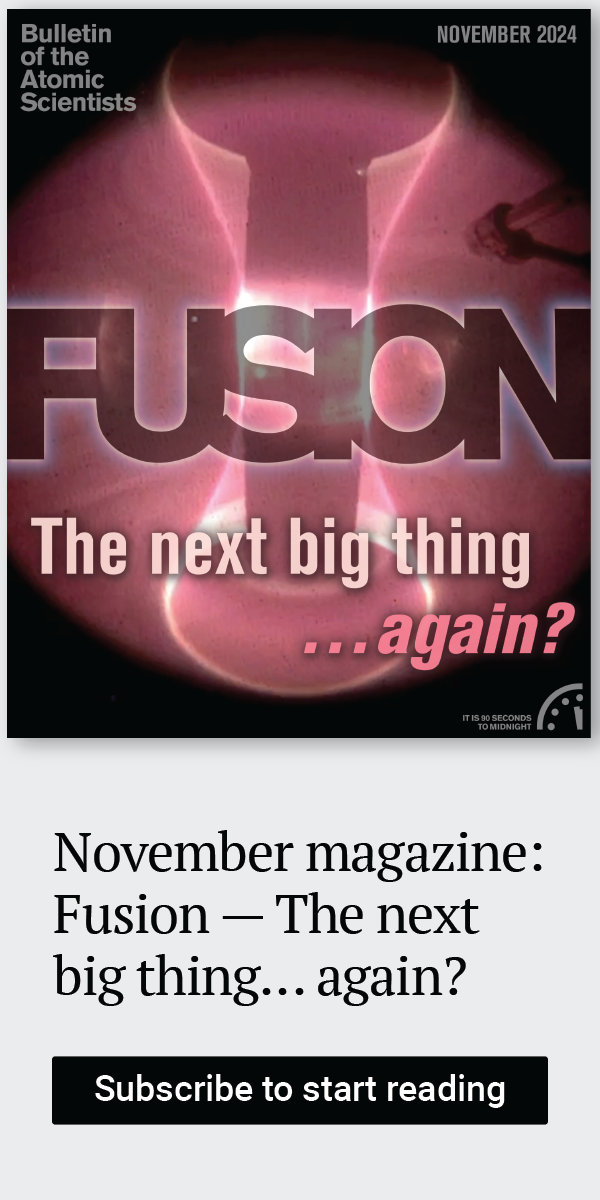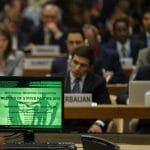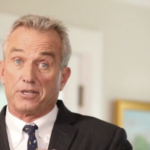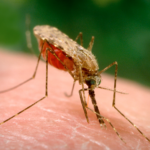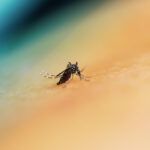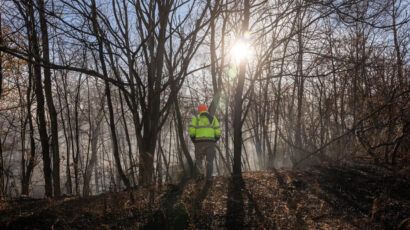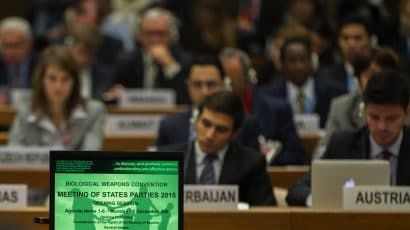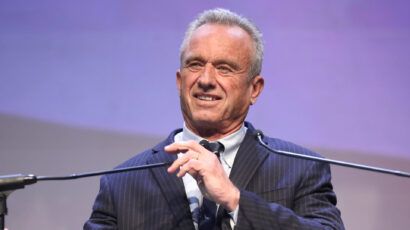Strengthening democracy and pandemic preparedness go hand in hand
By John Bridgeland, Elizabeth (Beth) Cameron, J. Stephen Morrison, Jennifer B. Nuzzo, Aquielle Person | September 23, 2024
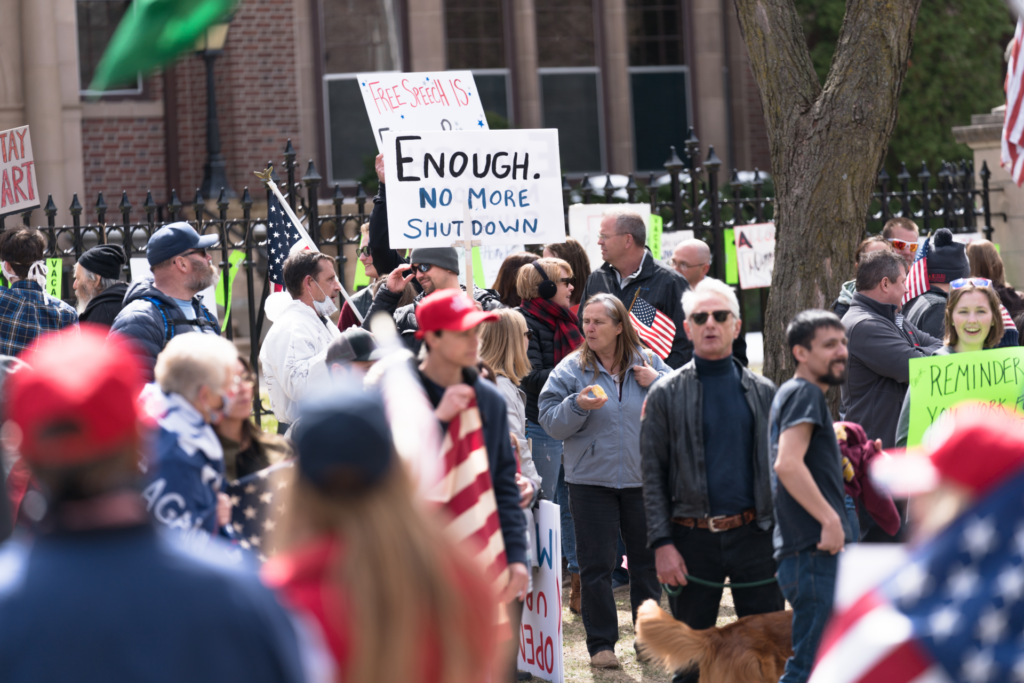 A protest against public health measures during the COVID-19 pandemic. Credit: Lorie Shaull via Wikimedia Commons. CC BY-SA 2.0.
A protest against public health measures during the COVID-19 pandemic. Credit: Lorie Shaull via Wikimedia Commons. CC BY-SA 2.0.
American democracy and public health effectiveness are inextricable. American health security depends on maximizing the ability to live in a free, pluralistic society able to coherently manage a public health emergency. In turn, the health of US democracy depends on citizens’ faith and trust in institutions—especially government—to protect them in a crisis such as a pandemic. Given disease threats like mpox or H5N1 avian flu, the looming potential for a worst-case biological crisis begs for a well-prepared nation. Unfortunately, the United States, because of or despite the challenges of the COVID pandemic, is now more politically polarized and less prepared to mount a united response to a major health emergency. That is a collective danger that threatens Americans and imperils the world.
Any effective future response to a biological crisis must protect individual freedom, foster responsibility for one another, and address the unique needs and concerns of every community, including the most vulnerable. Yet pandemic response tools like masking, vaccinations, and social distancing have become flashpoints that pit individual freedoms against collective responsibility. And trust in US governmental institutions has consequently eroded. Confidence in the Centers for Disease Control and Prevention (CDC) dropped nearly 30 points—79 percent to 52 percent—from March 2020 to May 2022.
This steep drop in trust comes at a dangerous time.
Central Africa is now facing a runaway outbreak of a more dangerous mpox strain that will inexorably spread within Africa and to Europe, Asia, and North America. At the same time, the United States continues to experience rising cases of H5N1 avian flu, a sobering reminder that the next pandemic could be only a mutation away. Meanwhile, the growing threat of antimicrobial resistance accounts annually for 2.8 million infections in the United States and 35,000 deaths. Climate-related impacts of disease are mounting, while COVID-19 continues to kill 50,000 Americans per year.
To better understand the challenges of a pandemic response amid political turbulence, the Brown University Pandemic Center, the COVID Collaborative, and the Center for Strategic and International Studies’ Bipartisan Alliance for Global Health Security, with assistance from the National Academy for State Health Policy, launched the American Democracy and Health Security Initiative. This effort involved interviewing state, local, and tribal leaders in the health, business, and education sectors from a politically diverse array of states, the initiative worked to chronicle what worked, what didn’t, and what could work better for the next health emergency.
This effort revealed that the story of how America fared during the pandemic was two stories: the well-known story of national failure, loss, inequity, and polarization, and the lesser-known story of state and local leaders the initiative called “lamplighters,” who came up with innovations to bridge political divides during the pandemic’s darkest days.
The initiative analyzed the efforts of these leaders and harvested key findings and recommendations for the future, so that Americans are better prepared next time to protect both lives and their way of life.
Among these recommendations are actions that can demonstrably improve preparedness, including forming a bipartisan health security council, developing localized, community-adapted health security playbooks, modernizing public health data systems, improving access to pandemic supplies, and setting up a system of geographically distributed training centers.
A bipartisan health security council. An independent consortium should establish a national, bipartisan, non-governmental council to quickly provide authoritative, consensus-based advice on emerging health threats such as H5N1, mpox Clade I, climate change, the continued threat of COVID, and outbreaks of future, as yet unknown threats.
During the pandemic, decision makers and citizens alike were bombarded with disparate recommendations from a confusing and often conflicting array of sources. Legitimate debate was muted, and mis- and dis- information flourished. Those leaders that became trusted voices during the pandemic succeeded by communicating frequently and transparently. They met people where they were—geographically, culturally, and linguistically.
For example, Carl Ellison, the president and CEO of the Indiana Minority Health Coalition, an organization that emphasizes delivering health information to racial and ethnic minorities, faced a community with language barriers and governmental mistrust. Ellison and his partners worked with state and community leaders to provide information on vaccines in multiple languages and helped to create vaccination sites where people in the communities they served felt safe.
Today, there is still a cacophony of views and a continuing stream of mis- and dis- information that makes it imperative to provide trusted and action-oriented information. A health security council would comprise nationally respected experts from the sectors of health, education, and the economy—including seasoned local, state, and federal policy makers and former elected officials from both sides of the aisle. By capturing the country’s true diversity and dynamism, it should help to restore trust and overcome toxic polarization.
Develop localized health security playbooks. As COVID-19 spread across the United States, there was significant uncertainty about the trajectory of the virus, including how deadly it was and who would be hit hardest. Faced with imperfect information and a limited tool kit, state and local officials were left with blunt, binary choices—with some advocating more stringent shutdowns and others wanting to open schools and businesses quickly. Successful leaders struggled to tailor their approaches to community needs, balancing often uncertain science with social, economic, and educational impacts.
During the worst of the pandemic, David Stegall, deputy superintendent for innovation at the North Carolina Department of Public Instruction, was tasked by Governor Roy Cooper to address the issues facing schools in a state with 115 different school district superintendents. “We had no playbook,” he told the initiative, “So we said, ‘Let’s develop the playbook.’” In the absence of tailored guidance for how schools could operate in a pandemic, Stegall convened officials across the state to identify and troubleshoot daily problems in real time.
As schools shut down in North Carolina, Stegall had to identify ways to amend State Board policy to allow school buses to transport food and send modems to rural families to provide internet access. As he faced the 2020-2021 school year, they worked to identify solutions to the challenge of reopening schools across the state in accordance with community needs—which eventually became the basis for a statewide playbook on reopening schools called Lighting Our Way Forward.
Playbooks that are informed by local leaders and responsive to community values can be instrumental in reducing polarization. They can account for worst-case scenarios and focus on the hardest challenges, such as safe opening and operation of schools and businesses. To facilitate the dissemination, adoption, and regular exercise of these playbooks, they should be developed in collaboration with organizations that bring government agencies at all levels together like the National Governors Association, the Association of State and Territorial Health Officials, and other state, local, and tribal organizations.
Modern data systems. In early 2020, pandemic-era leaders did not have a one-stop-shop for quality, actionable data, which left state and local pandemic leaders “flying blind,” as Seattle Mayor Jenny Durkan put it. They lacked testing data or epidemiological modeling, forcing many to create their own custom-made dashboards to see where the virus was moving and protect the most vulnerable.
Gary Anthone was Nebraska’s chief medical officer when COVID emerged, and for several months he and his team relied on personal communication with hospitals to obtain data across the state. In the fall of 2020, the state created a dashboard for the public after hospitals became able to automate the tracking of hospitalized COVID patients and available inpatient and intensive care unit beds. In March 2022, the Nebraska Respiratory Illness Dashboard was created to track RSV, influenza, and COVID-19 data.
Despite progress like this, the health data infrastructure across the United States remains fragmented at the state and local level.
During the COVID pandemic and mpox outbreak, federal and state agencies struggled to collect and analyze important data such as case demographic information—which was necessary to better understand which groups of people were experiencing the greatest harm and would benefit from additional protective resources such as vaccines. In the ongoing H5N1 outbreak, key information—such as when cases first became ill, when they were tested, and where they likely became infected—has not been available, making it very hard for communities to gauge whether the virus is present in their community and how effective efforts to contain the virus have been.
While there are several efforts underway that focus on modernizing state and local data for health decision making, a concerted and focused campaign for progress is essential to upgrade antiquated systems, ensure timely situational awareness of emerging threats, and improve the ability to target responses—especially for the most vulnerable—ensuring equity and limiting harm.
Access to pandemic supplies. In 2020, the United States experienced a “pandemic hunger games,” with widespread scarcities of supplies leading state and local leaders to compete with one another for tests and personal protective equipment. Washington wasn’t a reliable shipping clerk, and state and local leaders didn’t have well-exercised or defined ways to connect with the federal government to resolve supply access problems in real time.
To solve this challenge, some states banded together to pool purchasing and share best practices for testing through the State and Territory Alliance for Testing (STAT) Network, which was launched with the support of The Rockefeller Foundation, a nonprofit grant-making organization. Today, STAT is a key link among federal, state, and local officials—an irreplaceable network of over 500 state leaders in 52 states and territories who jointly solve operational challenges around issues of testing and other essential supplies in real-time. STAT is not sustainably resourced. To avoid losing this critical forum, STAT requires sustainable non-governmental or federal funding.
Geographically distributed training centers. The leaders we interviewed stressed the need to be prepared for worst-case scenarios—but many public health officials are not formally trained in crisis response. Unlike the national security and disaster response professionals they must work alongside during a health crisis, it is not always part of their culture to identify the most severe potential outcomes and work backward to develop the rapid solutions necessary.
Stanley McChrystal—whose eponymous organization helped cities and states during the pandemic by bringing together different sectors and coordinating response operations—told us: “COVID-19 was not a medical problem. It was an organizational challenge. It came down to whether we could get organized, make clear decisions, and implement those decisions across communities.”
Academic leaders and philanthropies should invest in developing improved health response curricula and a coalition of geographically distributed training centers, focused on health emergency decision-making, crisis communications, worst case scenarios, and pandemic equity.
Achieving greater societal resilience in the face of persistent pandemic threats requires tapping into the best elements of democracy—including the promise of leadership that is responsive and close to the people it serves. Systematizing the innovations of the leaders who garnered trust and steadily and transparently guided their communities through the pandemic won’t be easy, but the need is urgent. The path toward doing so is a road to rebuilding the trust—in institutions, government, and one another—that is essential to protect our country from a worst-case pandemic scenario.
COVID exposed our nation’s worst failings, but also revealed Americans’ greatest strengths. Some of the ideas that came out of the pandemic are worth pursuing now. The stakes are not just health preparedness, but the health of our democracy itself.
Together, we make the world safer.
The Bulletin elevates expert voices above the noise. But as an independent nonprofit organization, our operations depend on the support of readers like you. Help us continue to deliver quality journalism that holds leaders accountable. Your support of our work at any level is important. In return, we promise our coverage will be understandable, influential, vigilant, solution-oriented, and fair-minded. Together we can make a difference.
Keywords: 2024 election, COVID-19, H5N1, mpox
Topics: Biosecurity





